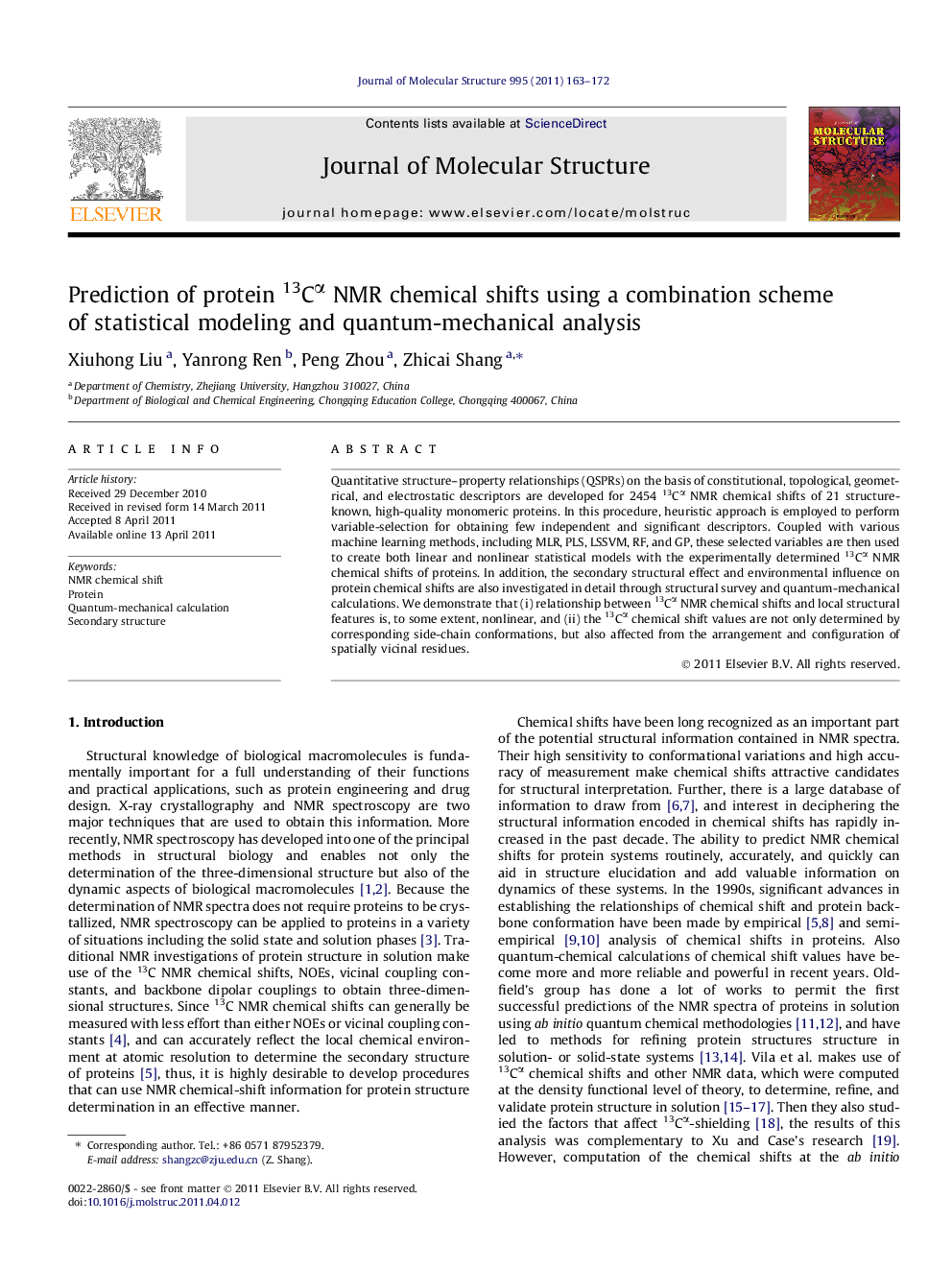| Article ID | Journal | Published Year | Pages | File Type |
|---|---|---|---|---|
| 1406057 | Journal of Molecular Structure | 2011 | 10 Pages |
Quantitative structure–property relationships (QSPRs) on the basis of constitutional, topological, geometrical, and electrostatic descriptors are developed for 2454 13Cα NMR chemical shifts of 21 structure-known, high-quality monomeric proteins. In this procedure, heuristic approach is employed to perform variable-selection for obtaining few independent and significant descriptors. Coupled with various machine learning methods, including MLR, PLS, LSSVM, RF, and GP, these selected variables are then used to create both linear and nonlinear statistical models with the experimentally determined 13Cα NMR chemical shifts of proteins. In addition, the secondary structural effect and environmental influence on protein chemical shifts are also investigated in detail through structural survey and quantum-mechanical calculations. We demonstrate that (i) relationship between 13Cα NMR chemical shifts and local structural features is, to some extent, nonlinear, and (ii) the 13Cα chemical shift values are not only determined by corresponding side-chain conformations, but also affected from the arrangement and configuration of spatially vicinal residues.
► We use five methods to develop accurate statistical models for 13Cα NMR chemical shifts of proteins. ► We examine the secondary structural and local environmental influence on chemical shifts. ► We investigate the cause of the deviation between real and ideal chemical shift for amino acids. ► The nonlinear methods are generally better than the linear methods, especially the RF method. ► An amino acid in different local environment in protein have different chemical shift.
